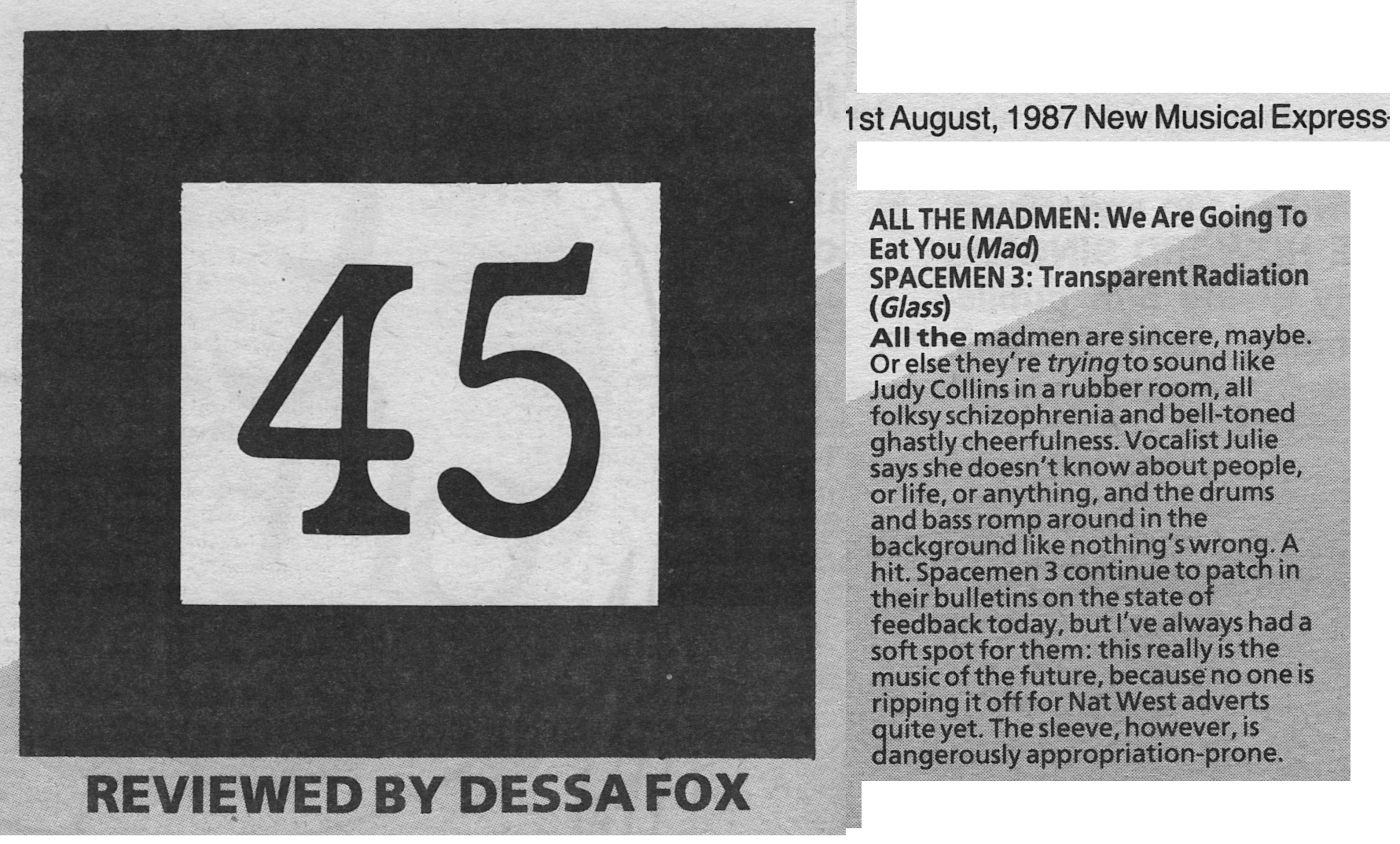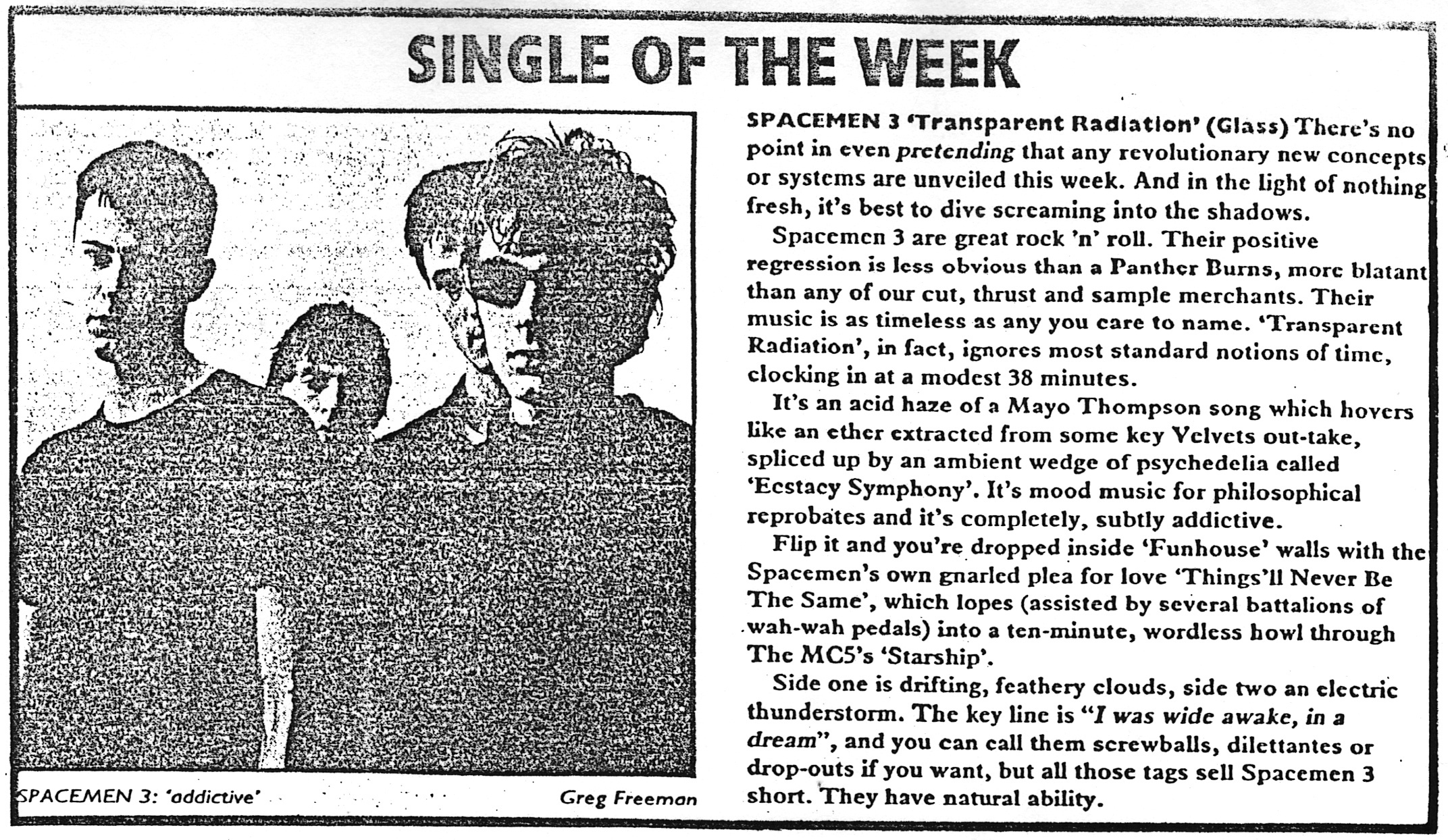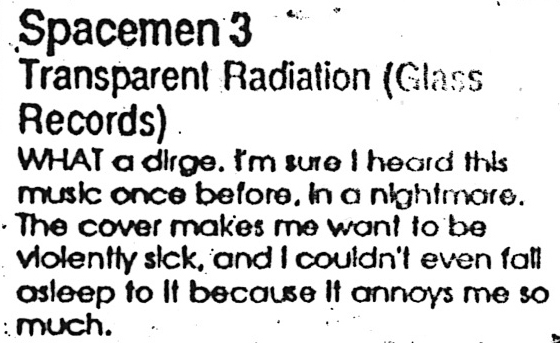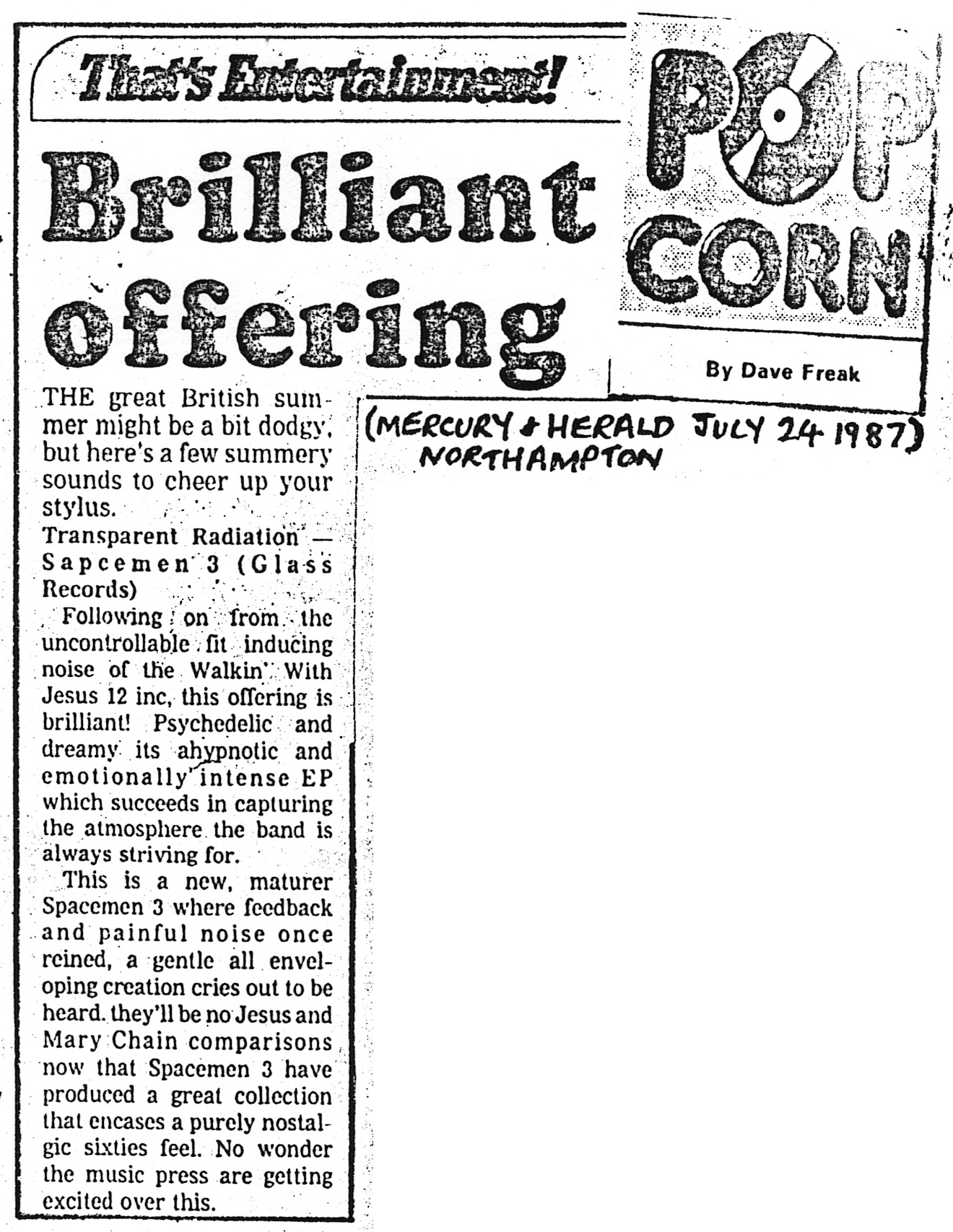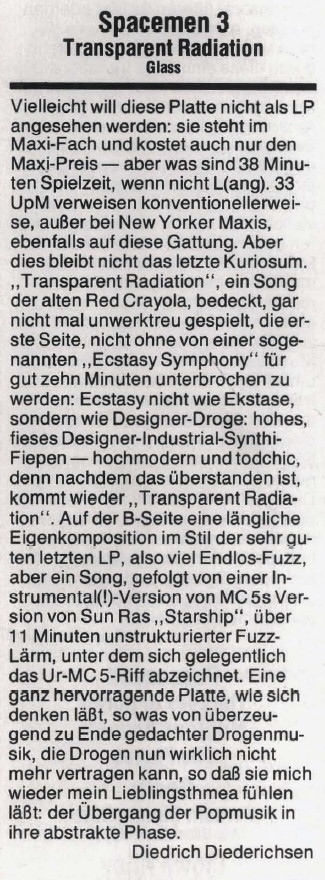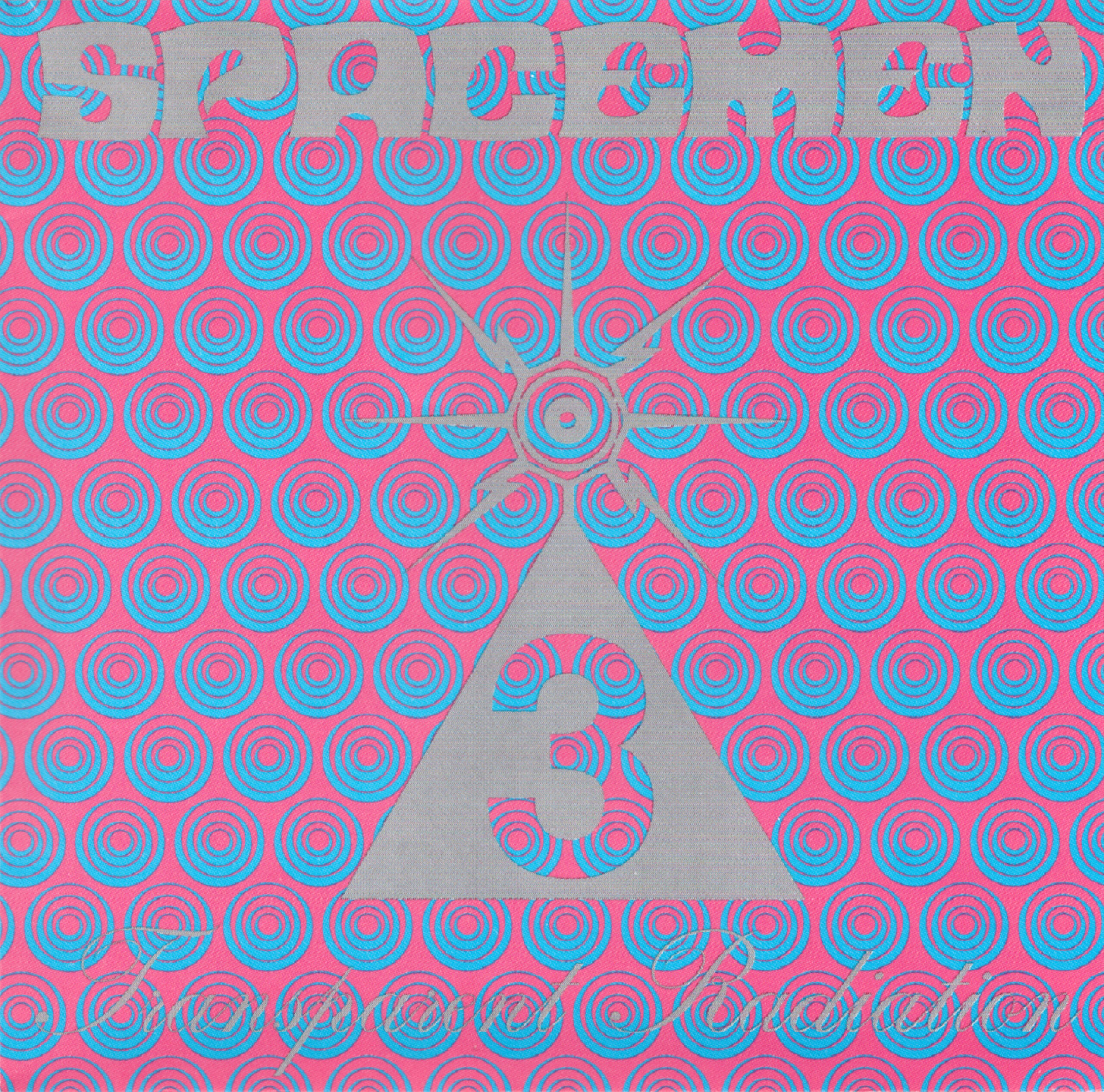 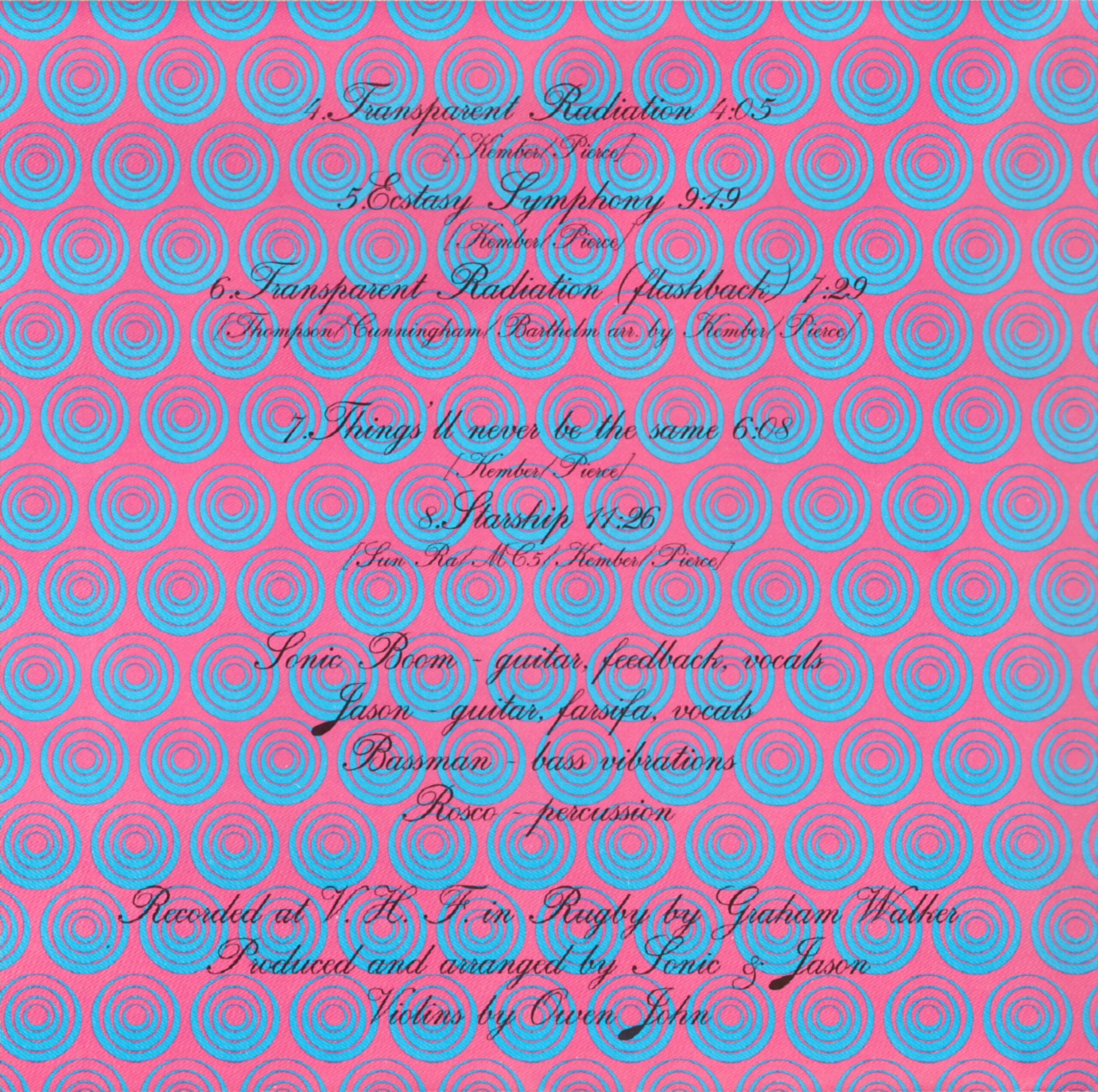 |
Personnel
Sonic Boom – guitar, feedback, vocals
Jason – guitar, farsifa, vocals
Bassman – bass vibrations
Rosco – percussion
Releases and Tracklistings
Released on Glass Records in July 1987, on 12″ only (GLAEP 108).
- Transparent Radiation (Thompson/Cunningham/Barthelme, arr. Kember/Pierce)
- Ecstasy Symphony (Kember/Pierce)
- Transparent Radiation (Flashback) (Thompson/Cunningham/Barthelme, arr. Kember/Pierce)
- Things’ll Never Be The Same (Kember/Pierce)
- Starship (MC5/SunRa, arr. Kember/Pierce)
Reissued on Fire Records, 2011, on 12″ (SFIRE 158-2).
Other Information
Recorded at V.H.F. in Rugby by Graham Walker. Produced and arranged by Sonic & Jason. Sleeve design by Spacemen 3. Violins by Owen John.
At around 40 minutes in length, the second Spacemen 3 single competes in duration with many albums. The A side features two versions of the title track, a short one with three superimposed vocal tracks, and a longer version which would also be included on The Perfect Prescription. These are linked by a 9 minute plus version of ‘Ecstasy Symphony’, which has some of the violins from ‘Transparent Radiation’ overdubbed onto it.
The version of ‘Things’ll Never Be The Same’ on the B side is the same recording as that on The Perfect Prescription, although the album version has been sped up very slightly.
Reviews
Text of Spex review
Vielleicht will diese Platte nicht als LP angesehen warden: sie steht im Maxi-Fach und kostet auch nur den Maxi-Preis – aber was sind 38 Minuten Spielzeit, wenn nicht L(ang). 33 UpM verweisen konventionellerweise, außer bei New Yorker Maxis, ebenfalls auf diese Gattung. Aber dies bleibt nicht das letzte Kuriosum. “Transparent Radiation”, ein Song der alten Red Crayola, bedeck, gar nicht mal unwerktreu gespielt, die erste Seite, nicht ohne von einer sogenannten “Ecstasy Symphony” für gut zehn Minuten unterbrochen zu warden: Ecstasy nicht wie Ekstase, sondern wie Designer-Droge: hohes, fieses Designer-Industrial-Synthi-Fiepen – hochmodern und todchic, den nachdem das überstanden ist, kommt wieder “Transparent Radiation”. Auf der B-Seite eine längliche Eigenkomposition im Stil der sehr guten letzten LP, also viel Endlos-Fuzz, aber ein Song, gefolgt von einer Instrumental(!)-Version von MC5s Version von Sun Ras “Starship”, über 11 Minuten unstrukturierter Fuzz-Lärm, unter dem sich gelegentlich das Ur-MC5-Riff abzeichnet. Eine ganz hervorrangende Platte wie sich denken läßt, so was von überzeugend zu Ende gedachter Drogenmusik, die Drogen nun wirklich nicht mehr vertragen kann, so daß sie mich wieder mein Lieblingsthmea fühlen läßt: der Übergang der Popmusik in ihre abstrakte Phase.
Translation of Spex review
Maybe this record does not want to be seen as an LP: it is in the maxi compartment and only costs the maxi price – but what are 38 minutes of playing time if not L (ang). 33 RPM conventionally refer to this genre as well, except for New York Maxis. But this is not the last curiosity. “Transparent Radiation”, a song by the old Red Crayola, covered, not even played incorrectly, the first page, not without being interrupted for a good ten minutes by a so-called “Ecstasy Symphony”: Ecstasy not like ecstasy, but like designer Drug: high, nasty designer-industrial-synth-whistling – ultra-modern and dead-chic, because after that, “Transparent Radiation” comes back. On the B-side an elongated original composition in the style of the very good last LP, so a lot of endless fuzz, but one song, followed by an instrumental (!) Version of MC5’s version of Sun Ras “Starship”, over 11 minutes of unstructured fuzz -Noise under which the original MC5 reef can occasionally be seen. A very outstanding record as you can imagine, something of convincingly finished drug music that really can’t take drugs anymore, so that it makes me feel my favorite theatricality again: the transition of pop music into its abstract phase.
